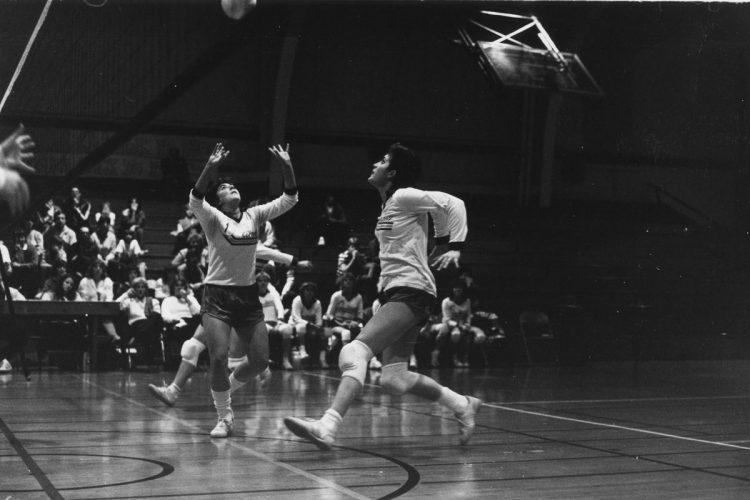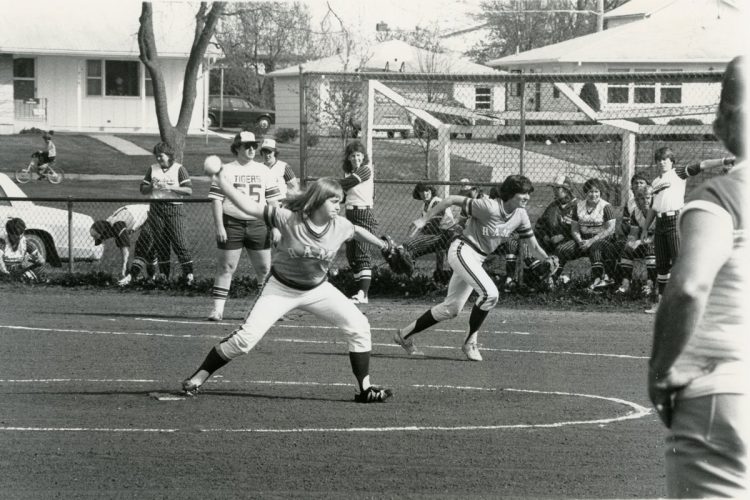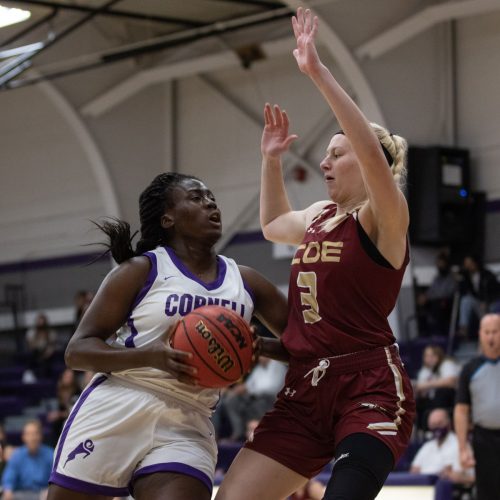The power of Title IX at Cornell
Cornell College has a long tradition of women’s athletic activities, but not until after the landmark Title IX civil rights law passed 50 years ago did we begin to have equity in sports for women.

Cornell women demanded physical activities as early as 1889 when the Ladies Battalion began drilling in skirted uniforms behind pews in King Chapel. By 1901 the college had a director of women’s physical training, providing opportunities in a variety of mostly intramural sports. Intramural and club activities continued until 1972 when Title IX resulted in increased access to women’s sports at the collegiate level, including at Cornell.
Title IX is powerful because it is about more than equality or even equity, says Heather Benning ’95, executive director of the Midwest Conference (MWC), for which Cornell is a founding member.
“It’s about social justice,” she says. “In our society we don’t yet have a collective lens on human rights and equity of opportunity. We as a society are not at a place where we approach life always asking the questions: Is this equitable? Why is there difference? Should there be change? Equity doesn’t have to be equality, but we need to be having those conversations all of the time and be active citizens in it. It’s not about sport; it’s about equity and fairness and education.”

When Ellen Whale arrived in 1978 as assistant professor of physical education and volleyball coach, she had those hard conversations—including when several recalcitrant male coaches balked at remodeling the wrestling room into a women’s locker room. (See the video of Whale discovering a space in the SAW is named for her.)
Women’s sports were perceived quite differently from men’s sports,” Whale says. “The philosophy of women’s sports was decidedly tilted toward intramurals. Competitive sports were seen as unfeminine and possibly damaging to women’s bodies.”
In her early years she recalls women’s tennis and volleyball teams shared one set of warm-ups while the softball team used cast-off men’s practice pants for their uniforms.
Some of the men’s coaches championed women’s athletics, notably athletics director Barron Bremner, as well as men’s soccer coaches who allowed women to join as early as 1974—well before the establishment of the women’s team in 1989.

Other milestones include Cornell’s first female national placewinner, swimmer Laurie Needham ’83 in 1980. The following year the women’s track team won the Midwest Athletic Conference title. And in 1983 Pauline Henry ’85 became Cornell’s first female national champion, in the long jump.
Not only has Title IX increased competitive opportunities for women, it has provided them with more female role models in male-dominated coaching and athletic administrative positions, says Lindsay Knake, Cornell’s assistant athletic director, senior woman administrator, and assistant women’s basketball coach.
“Having strong female leaders to mentor our female student-athletes is so important to their experience and shows them that there are opportunities for them to pursue a career in athletics,” she says. “Participating in sports has so many physical, mental, and social benefits, and we are setting our young females up for more success in life by providing these athletic opportunities.”
Before Title IX, there was Mary MacLeod, the grandmother of Cornell women’s athletics
The recent addition of women’s wrestling (starting competition in 2023) gives Cornell 10 men’s and 10 women’s teams. For over a decade women’s sports have been more successful overall than men’s sports at Cornell. This past academic year volleyball won its ninth consecutive MWC regular-season championship and qualified for the NCAA Tournament for the eighth time in 11 years. In 2021 Cornell landed the MWC Woman of the Year for the fourth consecutive year.
Today 41% of students participate in intercollegiate sports, a number buoyed by the many women who compete. We have evolved from the days when there was a new men’s gym (when the Fieldhouse opened in 1953) and an old women’s gym (the 1909 Alumni Gym). As we look forward to the opening of the $19.5 million Athletic and Wellness Facilities Project in August 2022—a contemporary and welcoming health, wellness, and sport center for all students, faculty, staff, and alumni—we can appreciate that it is addressing the essence of Title IX as noted by Benning: equity, fairness, and education. The new space, known as the SAW (Richard and Norma Small Athletic and Wellness Center), has implications beyond athletics, impacting physical and mental health needs of all members of the Cornell community.
Do you have a pre- or post-Title IX story to share? Contact us at cornellreport@cornellcollege.edu



